Blog 5
13th – 17th March
Turco to Uyuni
Total distance – 915km
With Reza flying out of Uyuni, Toby, Rolando and I drove back to Turco, the town where I stopped cycling due to my illness. I was much better than the last few days, but feeling weak, still on antibiotics. I wasn’t really in any condition to cycle but we could not afford to lose anymore time.
I rolled off from the church in the town square, with the aim of pedalling conservatively and reduce speed every time my heart rate shot up.

The good news was that I had a tarmac road and the gently undulating terrain wasn’t as challenging as it had been previously. I passed through open green landscapes and flocks of grazing llama.
The second half of the day knocked my struggling body around. The busy highway wound through a series of longer hills, into either a headwind or a crosswind. We tried to take a shortcut along a gravel road that looked perfectly feasible on Google Maps, but after three kilometres, the road disintegrated and was barely distinguishable, loosely tracking a fence line. An old woman said the track was impassable at a river crossing just ahead, so we returned to the highway and took the long way round (adding 13km).
By the end of the day I was feeling slightly better and covered 102km – I was relatively pleased given my delicate condition.
It rained solidly during the night and I awoke to a forecast of a 4C temperature, rain all day and a windchill of about 0C. Our beautiful grassy campsite was sodden. We packed our wet tents and gear as I deliberated how to approach the day. My regular cycling gear is unfortunately not as waterproof or warm as as was advertised. After 13km, I could no longer feel my fingers as was soaked to the bone.

I took shelter in the car for almost an hour trying to get warmth back into me and devise a new clothing system with what I had. My Mont shell salopettes made from Hydrolite material, normally for my polar expeditions, kept the rain and wind off my legs. I had already learned to stuff my light down jacket under my Santini jacket – it stays dry as it is protected in a cycling position and acts like a furnace, keeping my core warm. I slipped some chemical hand warmers inside a pair of wool mitts and crudely attached waterproof stuff sacks over each hand to keep the wind and rain out. It looked pretty comical, but I could still work the gear and brake levers. The system worked and I was able to withstand the conditions.
Lake Poopo
This route wasn’t in my original plan, but one of the thrills of adventure is to learn about new places and meet different people. For the next 100km or so, the road tracked the western shore of Lake Poopo, Bolivia’s second largest lake. Located in the middle of the Altiplano at an altitude of around 3700m, the lake is connected to Lake Titicaca to the north by the Desaguadero River (which we crossed at the southern extremity of Titicaca), and the Uyuni Salt Pan to the southwest of Poopo. About 5000 years ago, the whole region was a massive inland lake, possibly a sea. Now these three lakes are the remnants of the system. Titicaca, the world’s largest high altitude navigable lake (3810m) currently has a maximum depth of 280m. The now saline Lake Poopo has a variable depth of three metres, through several times in recent years it has dried up completely. Uyuni is now of course a salt pan (3600m) which is often covered with a film of water, up to 30cm after heavy rains.

When I knew we would pass Lake Poopo, we researched more about this intriguing place. I saw images of last year’s drought with dead fish and fishing boats stranded back from the present shoreline, like I have seen before at Lake Chad in Africa (or the Aral Sea). The existence of the lake that was predicted to become a salt pan like the Uyuni Salt Pan, in the next millennium, is now seriously threatened and may completely succumb to the forces that threaten it in the next few decades. The key contributors are a changing climate, the fast-disappearing Andean glaciers meaning less meltwater to feed the lake and mining operations on the eastern shore (that both uses the water in its processes and pollutes the lake with effluent.
Cycling within a few kilometres of the shoreline and gaining regular glimpses and a large body of the water beyond on a rainy, freezing day, it was hard to imagine that the lake was completely dry the year before. Rolando explained that this year was a rare wet season that typically occurs every six or seven years.
The hills to the west side of the road would have once served as the perimeter of Lake Poopo. Ancient civilisations cultivated every arable pocket of the fertile land. Evidence of the Wankarani culture (and possibly of the Tiawanakan culture) that existed in the region around Poopo from approximately 1500 BCE to 400 CE lies in the dense formations of unmaintained stone fences, making a patchwork of the slopes.
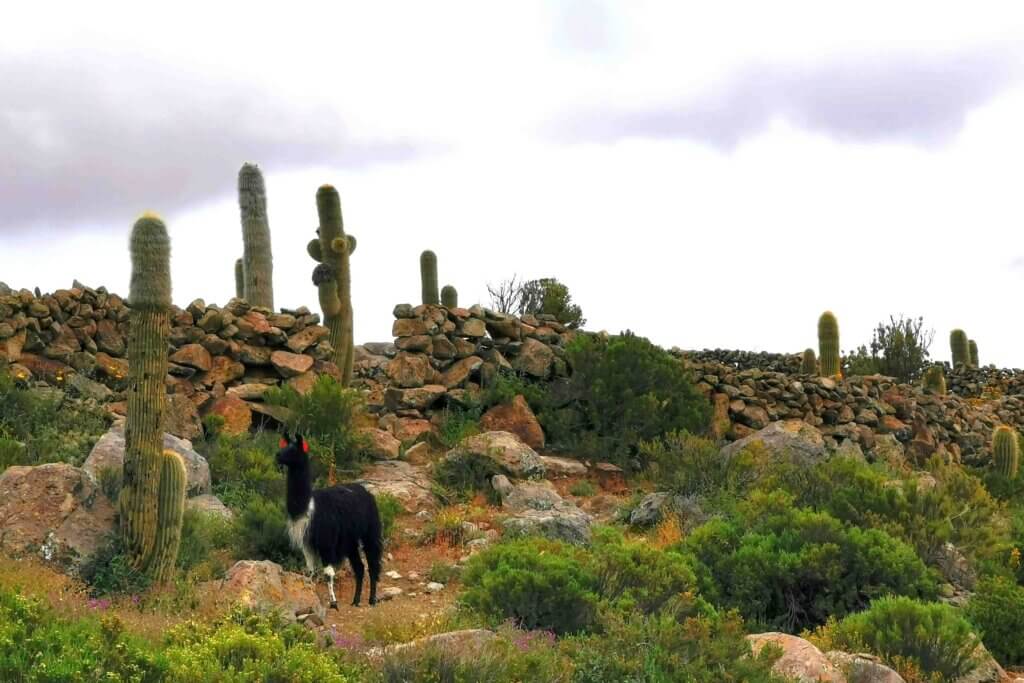
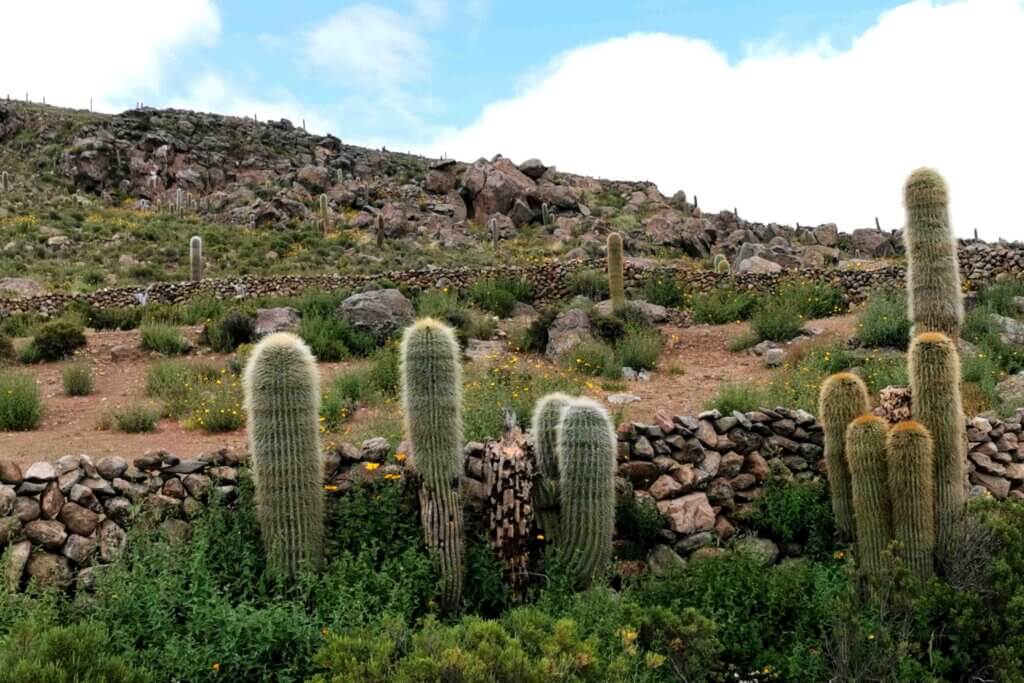
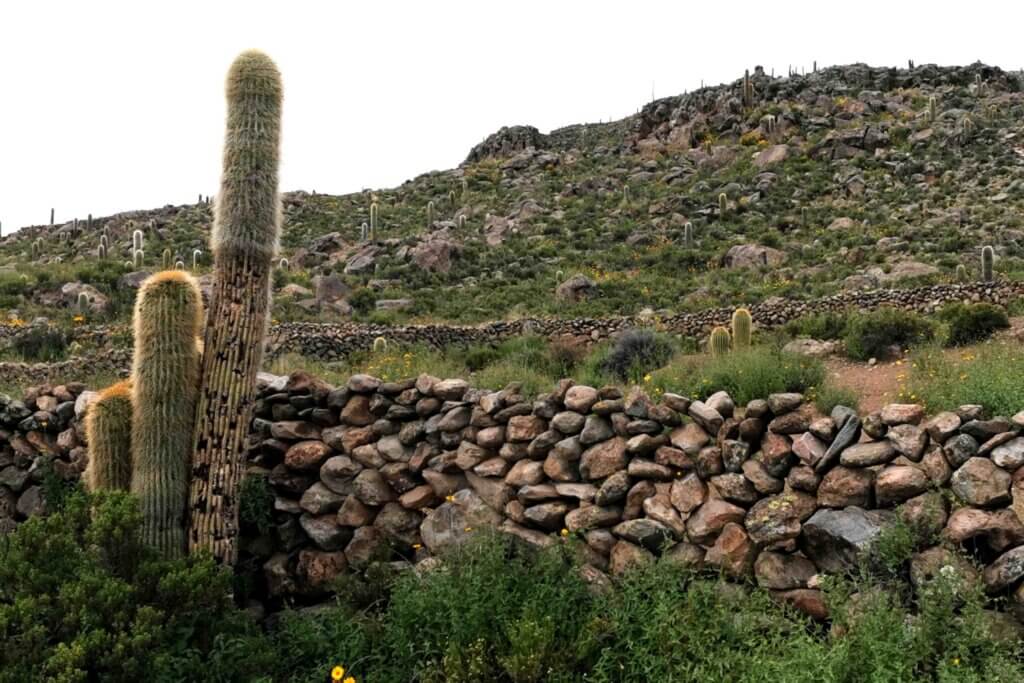
Later in the day, we managed to speak to a local resident, David, who happens to be a cousin of Bolivia’s former president (Morales). David has been a witness to many of the changes in the lake and with it the social dynamics of the region. Like many others, he had moved away as the prospects of making a living dried up, but recently returned due to the demand for growing quinoa – the demand for the ancient grain has grown internationally.
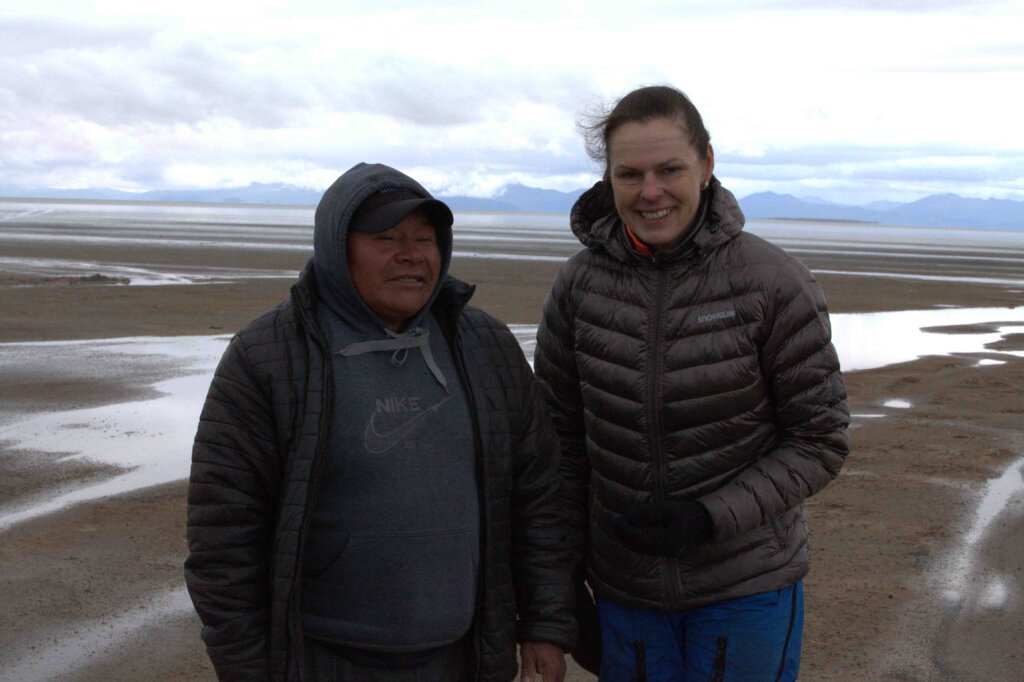
I just managed 79km that day, enough to ensure I didn’t lose a day. We stayed in a friendly but rudimentary accommodation in Orinoca, near the southern end of the lake. At least we were warm and dry, even if there was a bit too much llama fat in the complet (soup).

Despite all the challenges, my system was starting to settle down and I was feeling much stronger. Thankfully the rain had eased and the cool overcast conditions were good for cycling.

The road was bitumen all the way, but Rolando suggested a short cut along a sandy, wet road for 16km, which lopped 26km off my journey – a significant time saving even if it was hard on the bike. I didn’t escape the rain entirely and had to withstand another couple of freezing hours.
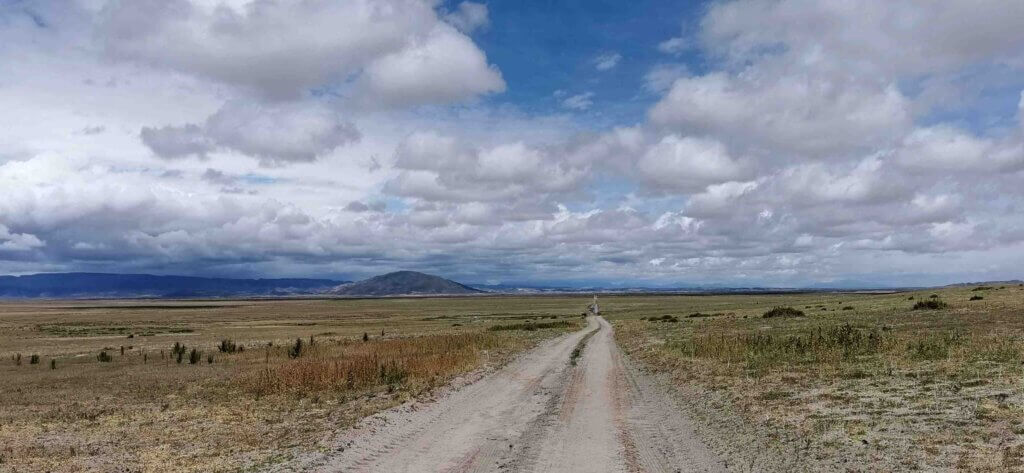

I was pleased to knock off 120km, passing spectacular fields of quinoa to reach the railway town of Rio Mulatos. Having just come through our illnesses and feeling almost recovered, Toby and I are very wary about hygiene in these places. I can’t afford to get sick again.

I blitzed the final 103km into Uyuni, savouring the good roads and incredible scenery.

After 28km we stopped to record a piece about what the growing of quinoa means to the people.
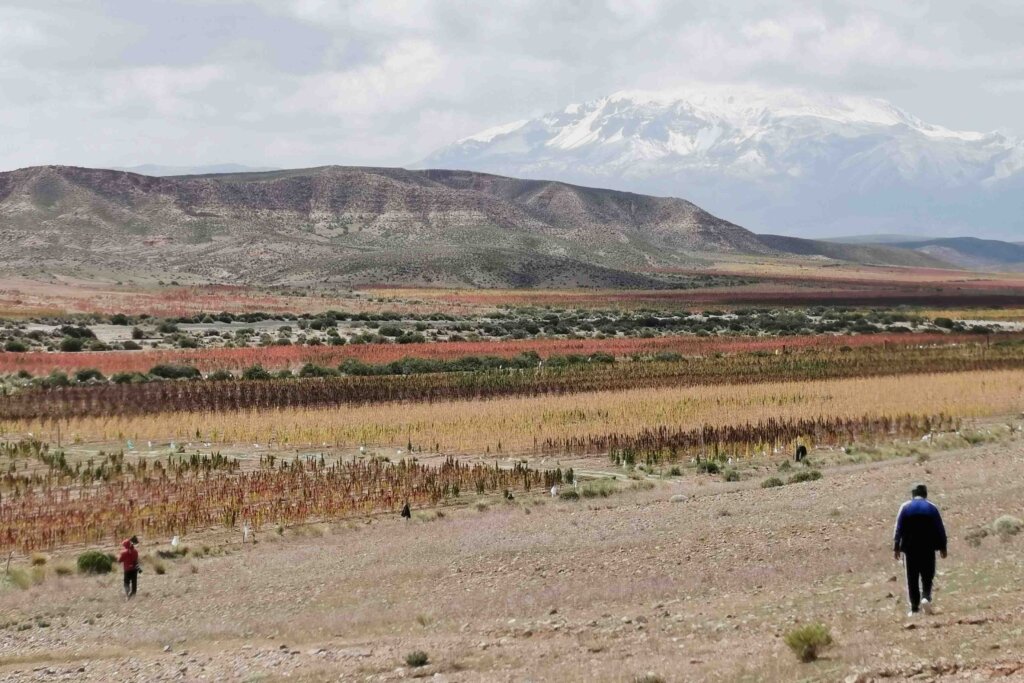


During the pandemic, when tourism around Uyuni dried up completely, Rolando was able to support his family by getting a variety of jobs, one being picking quinoa. Growers are allotted a plot of a maximum of 10 hectares. The government is socialist and does not permit larger land ownership, to keep the little wealth there is evenly distributed amongst the people. Quinoa is picked by hand (but sown by machine). The global demand for the grain has made a big difference to the local economies and has significant social benefits. So by buying Bolivian quinoa, you will be more than enjoying quinoa grown in its natural environment (altiplano, volcanic fertile soils, dry growing conditions), you will be supporting Bolivian people.
I loved moving through the variety of landscapes – quinoa fields, mountains, colourfully eroded ridges and badlands and finally, seeing Uyuni Salt Pan in the distance as I pedalled over a crest.

Now back in Uyuni, it is a pit stop before delving into the remote and challenging south west corner of Bolivia.










Hi Kate – I enjoy reading about your travels and sorry to hear that you were unwell. Llama fat in the soup doesn’t sound good to me!
Keep up the excellent work and bring this expedition to a glorious conclusion
Glad you’re recovering. Such an interesting podcast. My family eats quinoa. First time I’ve seen it growing. best wishes for the challenges of south west Bolivia!
Amazing Kate. Your strength is unbelievable to overcome all the challenges that are presented to you. Love the brilliant photos, especially the quinoa fields which I have never seen before.
Best wishes from Tim and myself.
Wendy W
Having always eschewed quinoa, mocking it as one of those trendy so-called “superfoods”, I will have to start chewing it. Ride on, and keep educating us to overcome our prejudices.
Great work, Kate. It’s not easy cycling when you’re feeling anything less than 100% well. Beautiful photos. Will look out for Bolivia brands of quinoa. Super interesting and important to see how people and environments adapt and struggle with climate change.
Well done Kate, really interesting blog. Hope you are eating lots of Quinoa!
Yes, I had quinoa soup tonight!!!